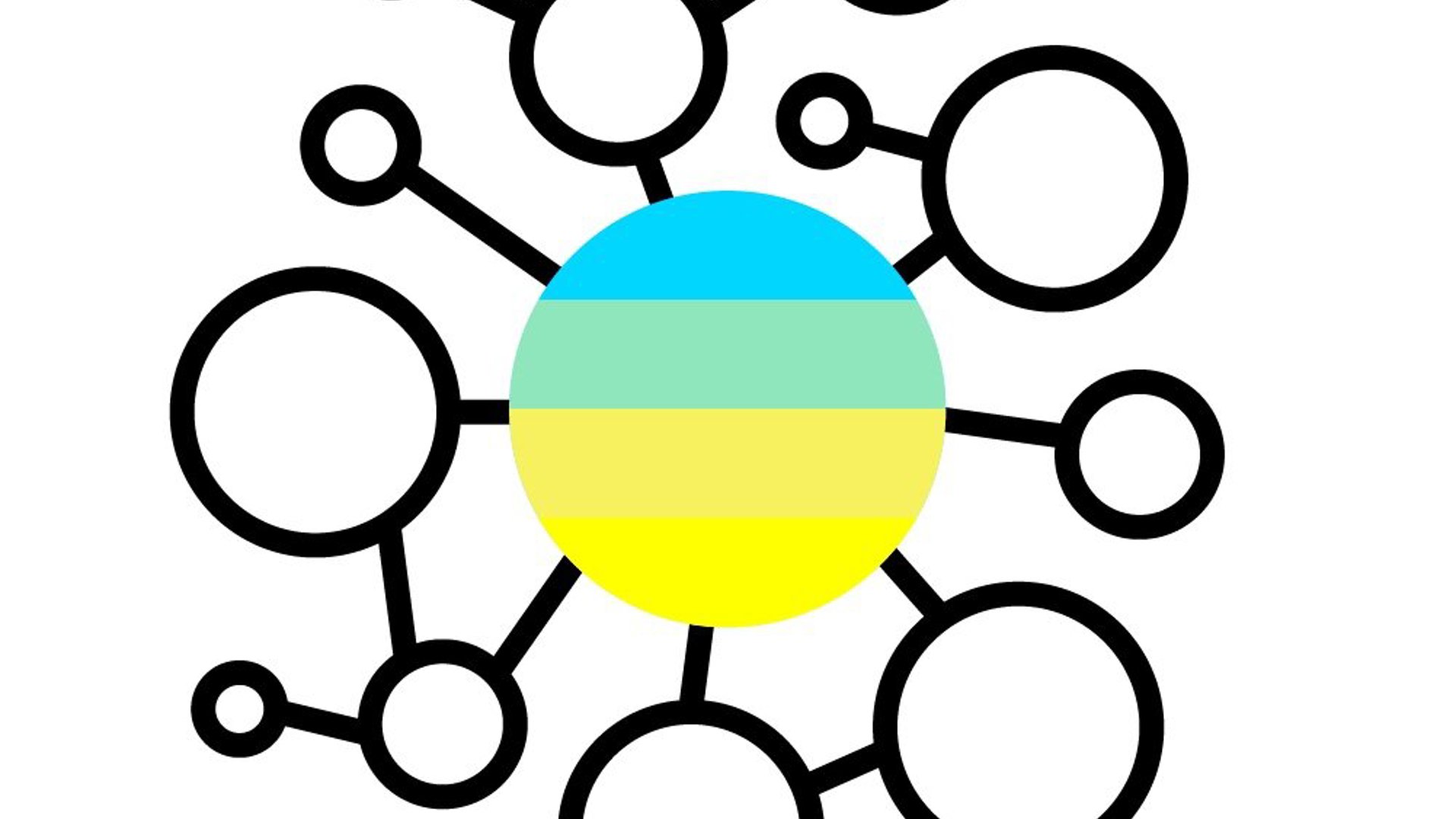Introduction
Master Data Governance is the backbone of any solid data management strategy, ensuring your data stays accurate, consistent, and compliant across the board. In this comparison study, we’ll break down the key differences between SimpleMDG, SAP MDG on S/4HANA, and SAP MDG Cloud Edition, highlighting their standout features, benefits, and limitations. Whether you’re weighing flexibility, scalability, or ease of use, this comparison will help you choose the solution that best fits your organization’s needs. Let’s simplify the decision-making process and find the right tool to power your data governance journey!
Comparison Overview – Highlights
We will first delve into a comparison overview displaying the key features of the 3 different tools. This serves as a generic guideline to see the highlights and the possibilities SAP MDG on S/4HANA, SAP MDG CE and SimpleMDG have to offer.
Download our whitepaper
In this guide, we take a closer look at the differences between SAP MDG and SimpleMDG to help you choose the right approach for your master data strategy.

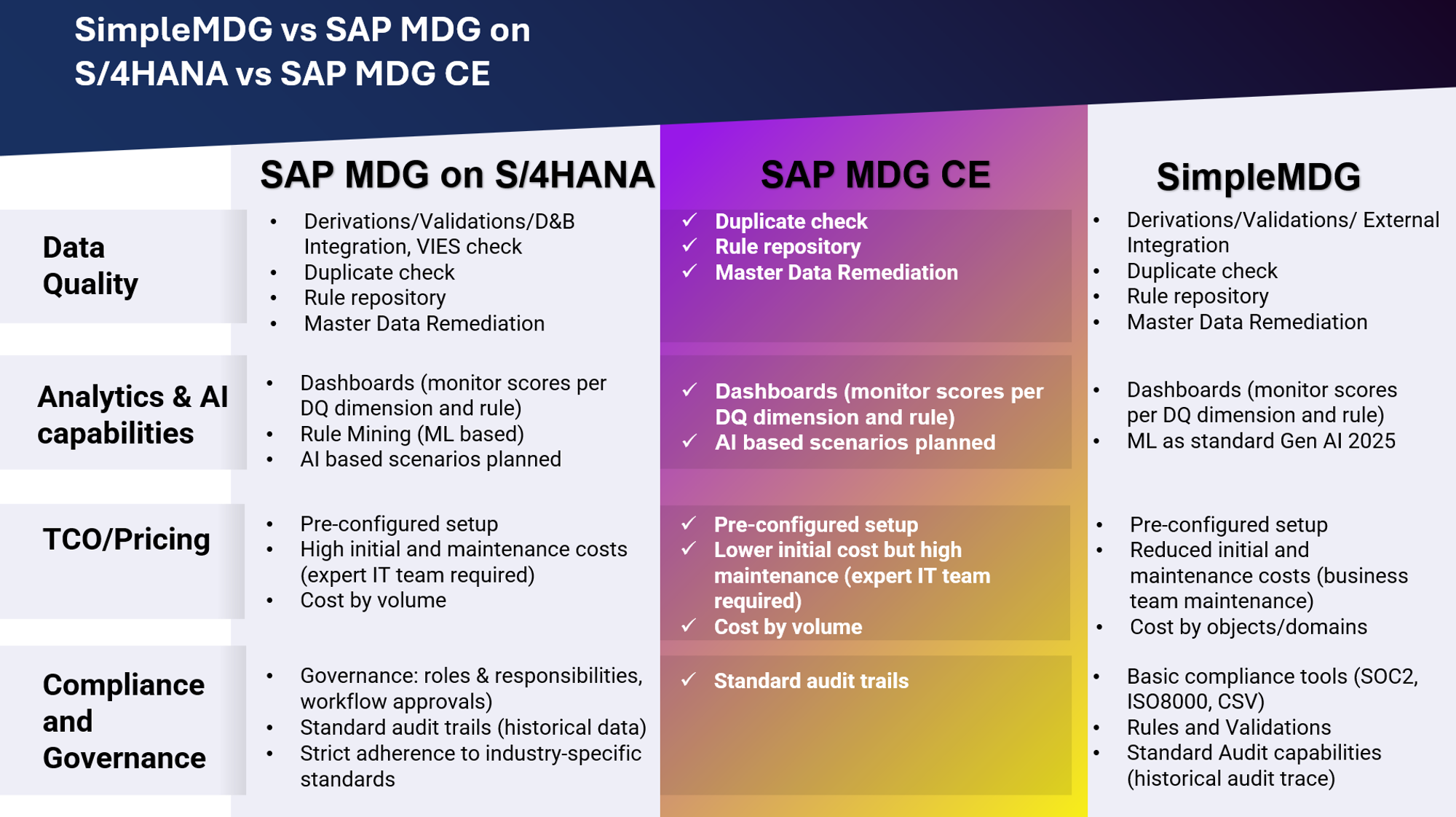
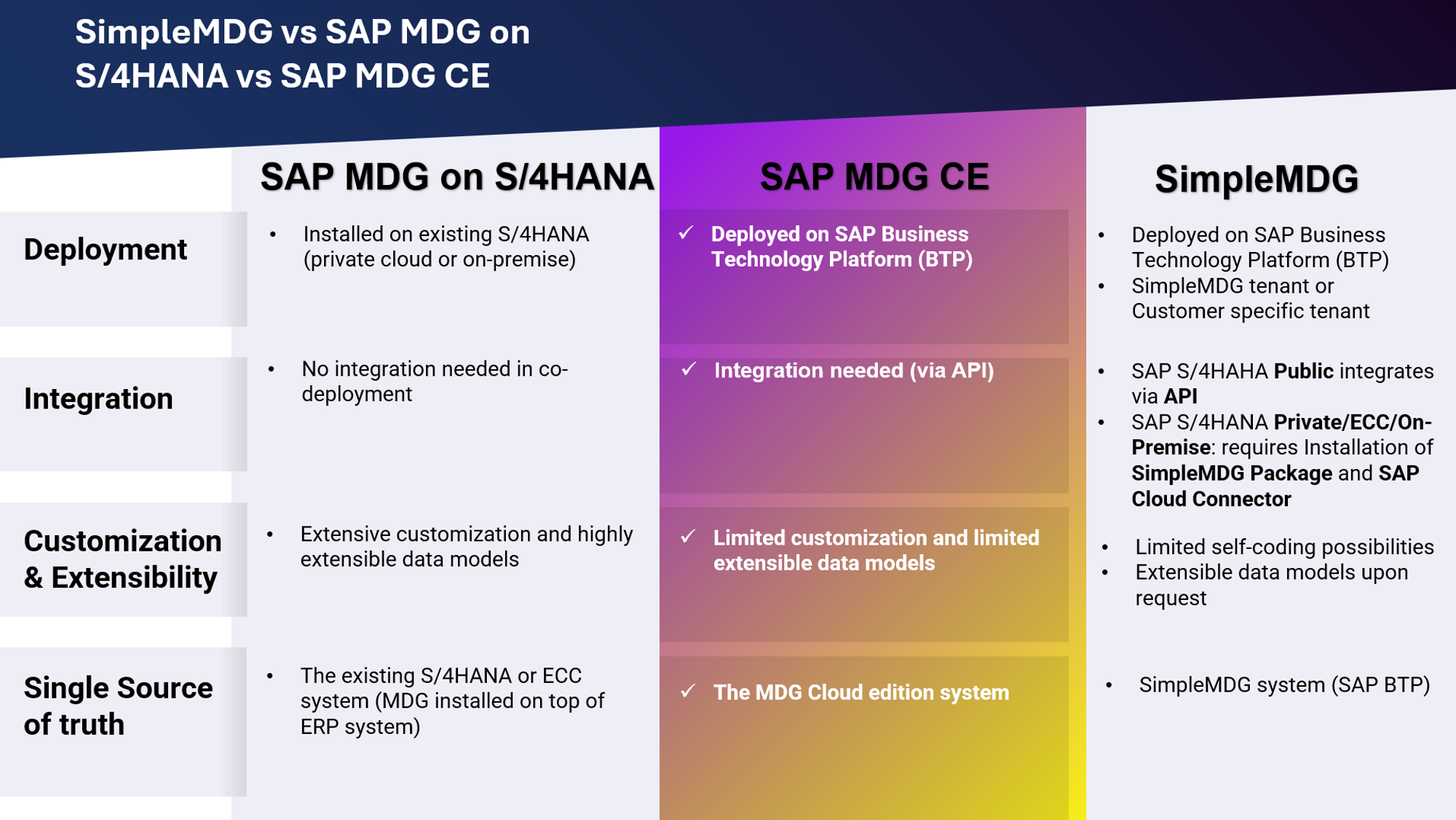
SAP MDG on S/4HANA
- Overview
SAP Master Data Governance (MDG) on S/4HANA is a robust, enterprise-grade solution designed to seamlessly fit within the SAP ecosystem. It helps businesses efficiently manage master data across key areas like finance, business partners (customers and vendors), and materials. By centralizing and streamlining data management, it ensures that your organization’s data remains consistent, accurate, and reliable—no matter where it’s used. It’s a powerful tool for keeping everything in sync while supporting your broader business goals.
- Customization and Extensibility
One of the biggest perks of on-premise deployment is the ability to fully customize your system. You can tweak data models, add custom fields, and adjust workflows to perfectly match your business’s unique needs. It’s like having a tailored suit—everything fits just the way you want it to.
- Integration with Existing SAP Systems
SAP MDG on S/4HANA integrates effortlessly with your existing ECC or S/4HANA systems, providing seamless functionality without requiring complex server integration. This offers flexibility and control to customize data governance processes. It’s a trusted solution for businesses seeking tailored, efficient data management.
- Data Model and Governance
The data models in SAP MDG on S/4HANA cover objects such as Business Partner, Customer, Vendor, Material, and Finance. While it’s versatile, some features like consolidation are limited, and data quality management isn’t available in ECC environments.
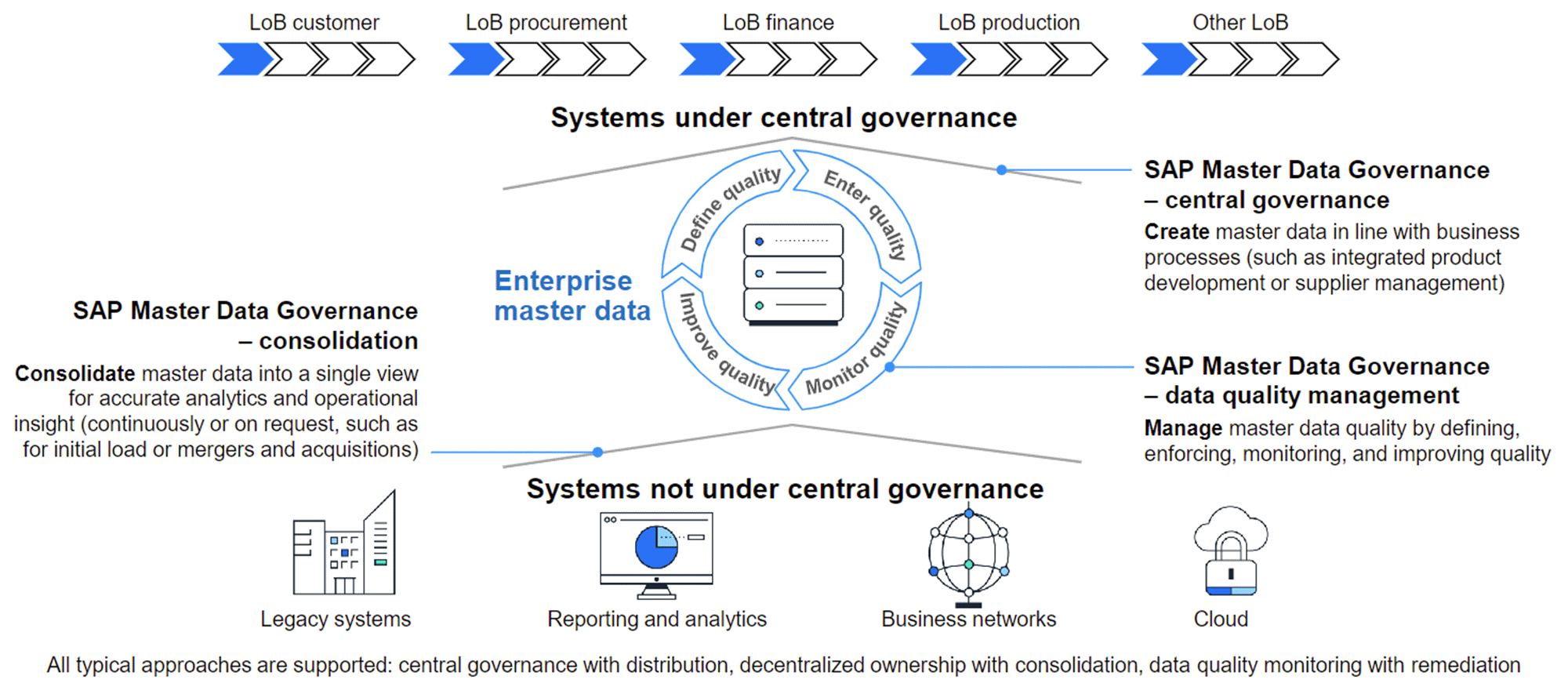
Figure 1: SAP MDG Overview
Benefits:
- Offers a high level of customization and flexibility, letting you tailor the system to your needs.
- Can be deployed in S/4HANA Private Cloud or On-Premise
- Integrates seamlessly with your existing systems for a smooth transition.
- Provides full support for all data models, ensuring comprehensive coverage.
Limitations:
- Data governance capabilities are more limited in ECC environments.
- Requires higher upfront setup costs and ongoing maintenance efforts.
SAP MDG Cloud Edition
- Overview and Benefits
SAP Master Data Governance (MDG), cloud edition, is a Software as a Service (SaaS) solution designed to help organizations maintain high-quality master data. Built on the SAP Business Technology Platform (BTP), the public cloud solution offers capabilities such as central governance, consolidation, and data quality management for core business partner data. This cloud-native approach provides a pre-configured environment that reduces upfront costs and simplifies maintenance. Read more about it in our in depth overviews here and here.
Centrally manage core (application-agnostic) attributes of Business Partner data based on SAP One Domain Model and let the management of application-specific attributes in the hands of the de-central applications.
- More modular approach and better balance central and de-central master data management processes.
- Enables organizations to govern master data exactly where it is best understood.
- Data Governance Capabilities
The Cloud Edition offers strong data governance capabilities, such as central governance, consolidation, mass processing, and data quality management, though it has fewer customization options compared to the on-premise version.
- Customization Flexibility
MDG Cloud Edition comes with a pre-configured setup, which means fewer customization options compared to on-premise solutions. While this might feel like a trade-off, it’s actually a big plus for organizations looking to keep things simple and avoid the hassle of managing complex customizations. It’s a streamlined approach that lets you focus on what matters most - your business.
- Data Model Support
At present, the Cloud Edition supports the Business Partner (BP) model (incl. Business Partner legal hierarchies), covering both customers and vendors, but does not offer other data models in this deployment option yet (product domain planned). Data models are based on the One Domain Model (ODM) and Master Data Integration (MDI).
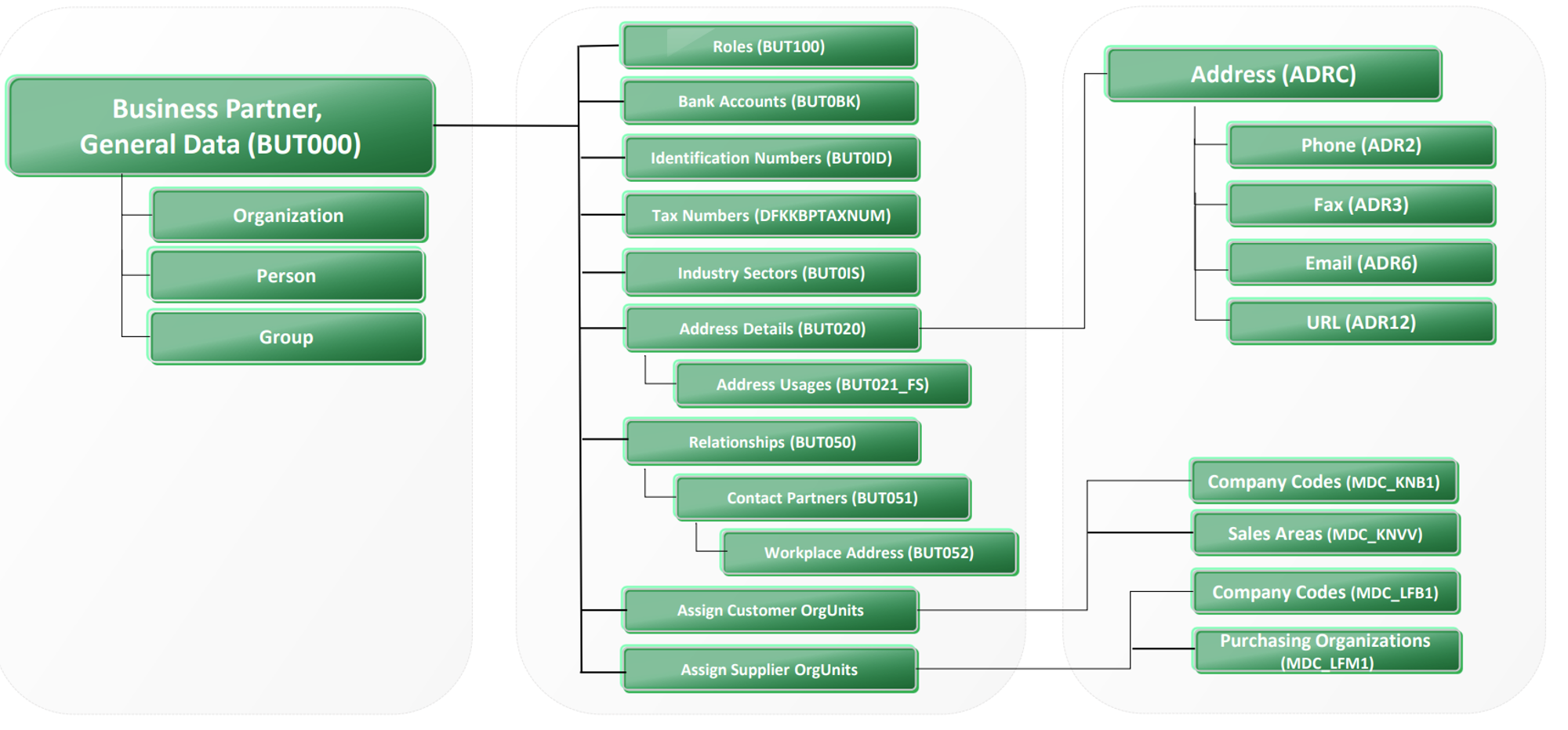
Figure 2: SAP MDG CE - Business Partner Data Model
Benefits:
- Lower upfront costs and easier maintenance make it a budget-friendly choice.
- Comes packed with strong data governance features to keep your data in check.
- Rapid Time to Value via No Code implementation
- Built on SAP BTP (Cloud SaaS), ensuring a modern, scalable foundation.
Limitations:
- Customization options are more limited, so it may not fit highly specific needs.
- Currently supports only the Business Partner (BP) data model, which could be restrictive for some organizations.
We created this guide to help customers who are new to MDG navigate their deployment options. Our goal is to provide a clear, unbiased look at the pros and cons of each version, along with a handy comparison table to simplify your decision-making. Since every business has its own unique needs, we’re here to offer personalized support—just reach out if you need a hand!
Mano De Backer, SAP Master Data Consultant at Alluvion
SimpleMDG
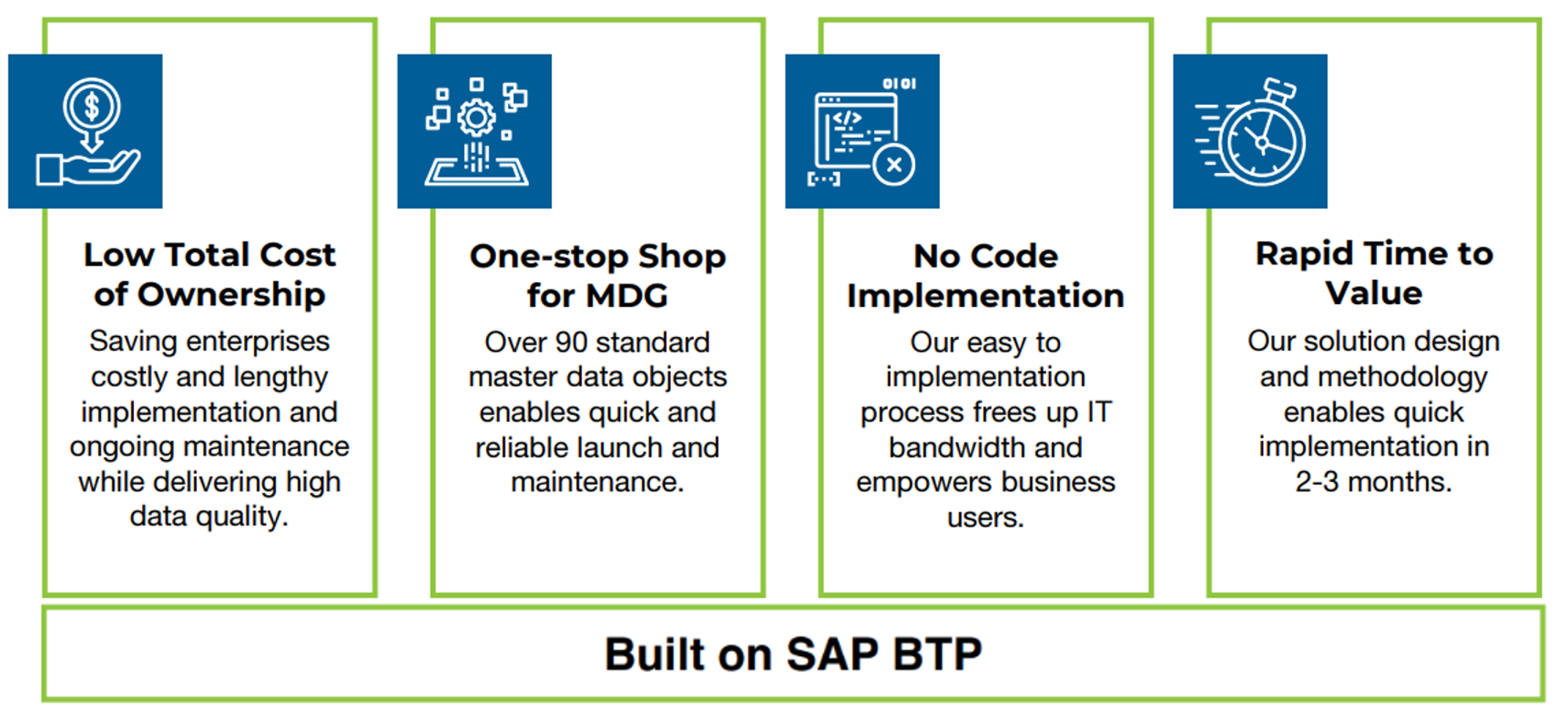
Figure 3: Overview SimpleMDG
- Overview and Benefits
SimpleMDG is a streamlined, cloud-based master data governance solution built for SAP ERP, running on SAP BTP. It’s designed to help businesses strengthen their master data foundation, boosting operational efficiency, ensuring compliance, and fostering innovation—all while keeping things simple and manageable.
As a more lightweight alternative to SAP MDG, SimpleMDG focuses on delivering essential master data management (MDM) functionalities. It’s an ideal fit for smaller organizations or those with less complex data needs, offering a user-friendly approach without the overhead of a heavier system. If you’re looking for a practical, no-fuss solution, SimpleMDG might be just what you need. To learn more, visit our website here.
- Data Governance Capabilities
SimpleMDG delivers strong data governance capabilities, such as central governance, consolidation, mass processing, and data quality management, making it a reliable choice for many businesses. That said, it doesn’t offer the same level of customization flexibility as SAP MDG on S/4HANA. If you’re looking for a straightforward solution with powerful features but fewer customization needs, SimpleMDG could be a great fit.
- Customization Flexibility
SimpleMDG comes with a pre-configured setup but has limited self-coding capabilities. This balance can benefit organizations seeking to simplify their processes and lower the effort involved in managing extensive customizations.
- Data Model Support
At present, SimpleMDG supports 80+ SAP S/4HANA objects out-of-the-box, with objects like Material, Business Partner (Customer/Supplier), Bill of Material, Purchasing Info Record, …
Benefits:
- Built on SAP BTP (Cloud SaaS): lower upfront and maintenance costs (lower TCO)
- Wide scale of data governance features
- Seamless integration with SAP and non-SAP systems
- Full support for 80+ SAP S/4HANA objects
- Rapid time to value via No Code implementation
Limitations:
- Limited self-coding options
- Limited Industry-Specific Solutions
Conclusion
Choosing the right master data governance solution depends on your organization’s specific needs and level of complexity. Here are three common scenarios where each tool might be a fit for you.
- SAP MDG Cloud Edition (CE) – Federated Governance
At present, SAP MDG CE is not a fully standalone solution but serves as a complementary tool to SAP MDG on S/4HANA in a federated setup, enabling master data syndication across multiple SAP MDG systems.
- SAP MDG on S/4HANA – Highly Customized Master Data Needs
If your business requires a high degree of customization and deviation from standard SAP data governance processes, SAP MDG on S/4HANA provides the depth and adaptability you need. SAP MDG on S/4HANA allows flexible workflows, data models, and governance tailored to specific requirements.
- SimpleMDG – No-Code, Cloud-Based Governance with Faster Time to Value
Running on SAP BTP, SimpleMDG provides essential governance with a no-code approach, ensuring a faster time to value while keeping the core clean.
As we bring this article to a close, we appreciate you taking the time to explore the different Master Data Governance tools with us. The road ahead is full of opportunities, and at Alluvion, we’re eager to help you make the most of them.
Download our whitepaper
In this guide, we take a closer look at the differences between SAP MDG and SimpleMDG to help you choose the right approach for your master data strategy.
If you need any more information on this topic, fill in the form below, and one of our experts will get in touch soon!

Mano De Backer
SAP Master Data Consultant
SAP MDG Consultant at Alluvion, MSc Business Administration. Expertise: Certified in SAP MDG, BRF+, SAP MDG Consolidation, SAP Data Quality Management, Design Thinking, AI ethics, SAP BTP. Certified in Business Process Integration with SAP S/4HANA 2020 & Prince2 Project Management.
Featured articles




